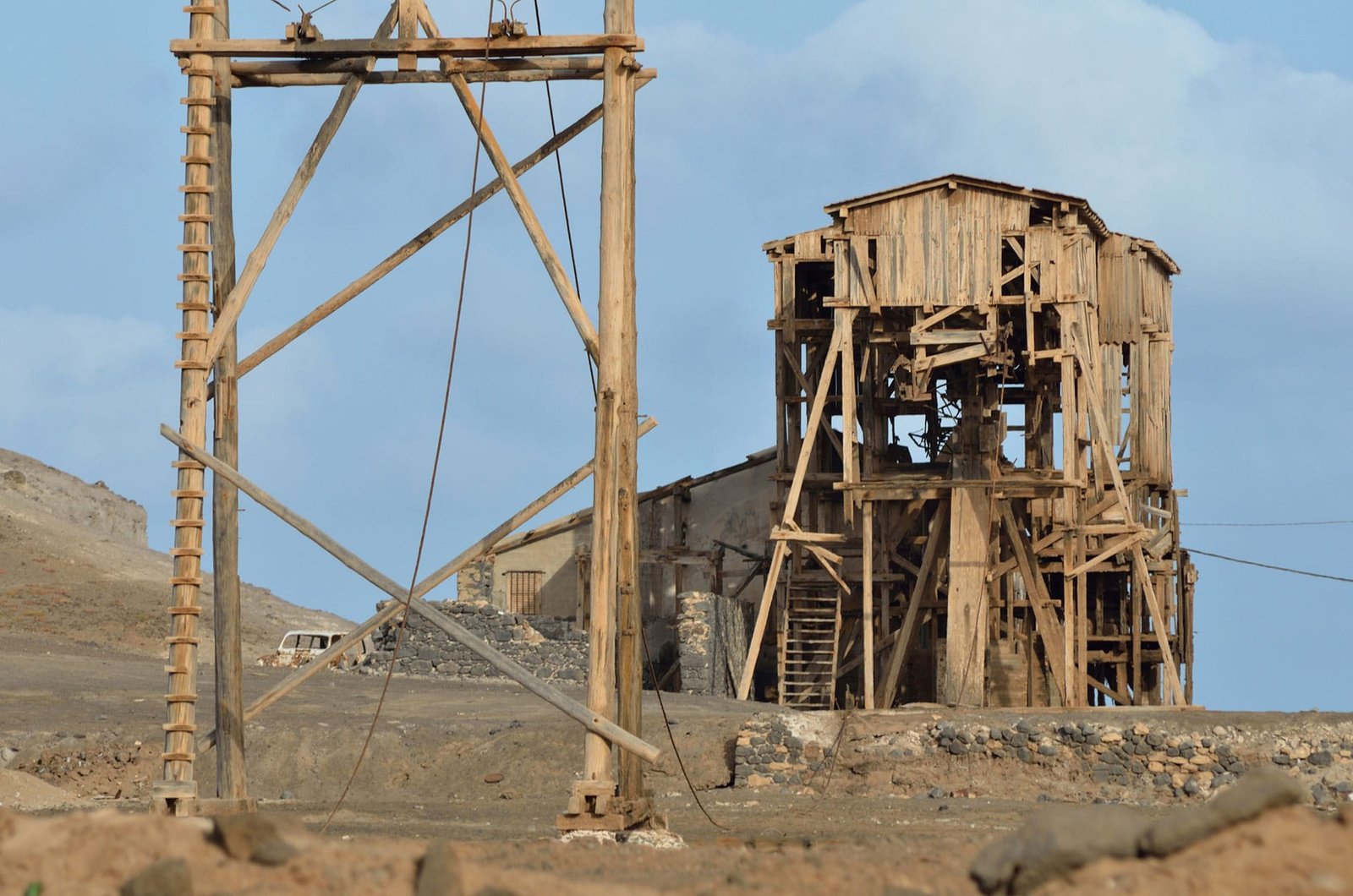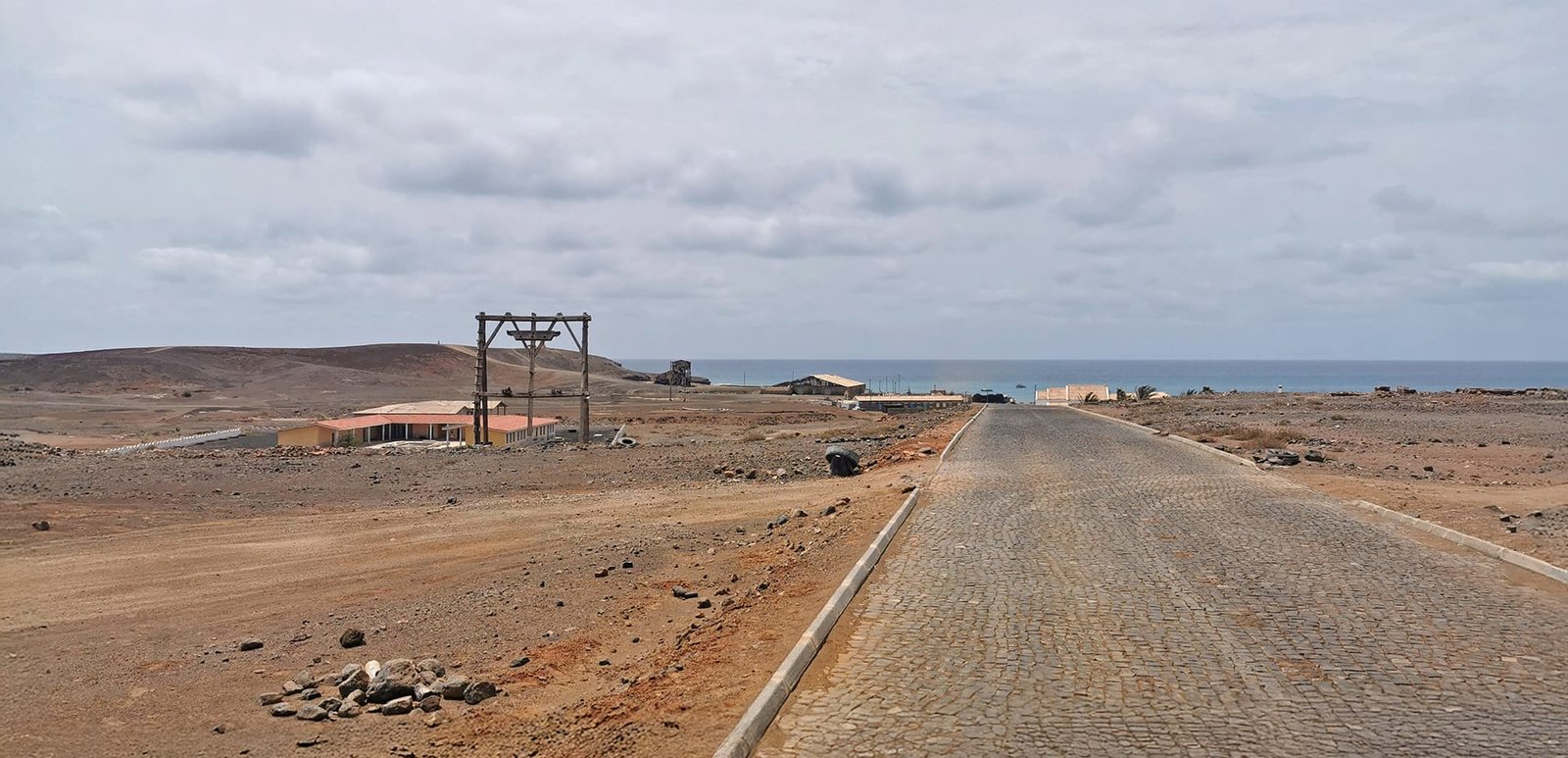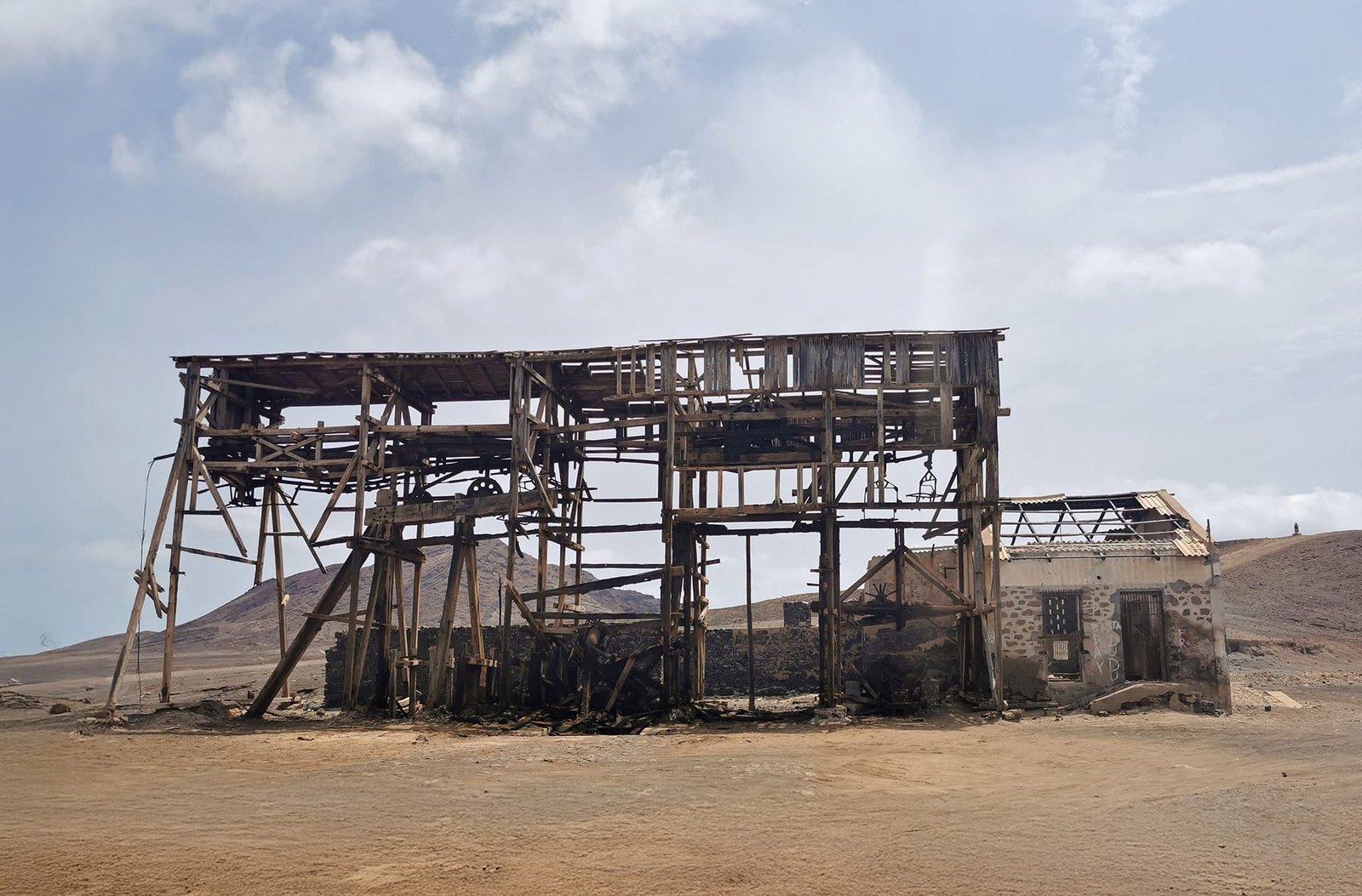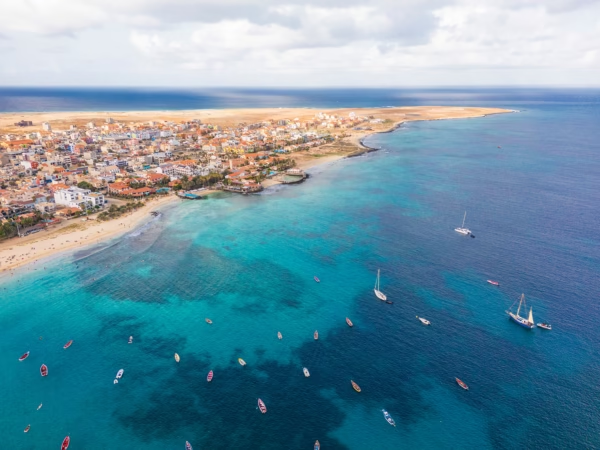Abandoned Salt Shed: the Old Ghost of Pedra de Lume

On the edge of the saline flats in Pedra de Lume, just a stone’s throw from the old pier where schooners once docked, stands the brittle frame of a long-forgotten salt storage shed. Time has prised it open. Sun-bleached wood and rust-bitten pulleys dangle in silence, a warped reminder of a time when Cape Verde’s salt once sailed far beyond these shores.
This skeletal structure, precarious yet upright, is one of the last surviving traces of Pedra de Lume’s industrial core — an era when salt was not merely a mineral but a currency, binding the island to trade routes that stretched across the Atlantic.
Google Maps: Ancien Hangar de stockage de sel
Address: Q475+4G5, Unnamed Road, Pedra Lume, Cape Verde
A Building Made for Work
The shed was built to serve one purpose: to store and process the bulk salt harvested from the crater. The method was efficient. Salt was collected from the evaporation ponds inside the ancient volcanic caldera and transported down a gravity-fed aerial cableway — its remains still visible in iron anchors and wooden trusses — directly into this facility.
Inside, the salt was sorted, dried, and packed into hessian sacks marked for departure. From here, it was loaded onto carts, rolled to the loading dock, and shipped toward Portugal, Brazil, and later Senegal. In the late 19th century, the operation was semi-mechanised, and one can still see the corroded gearing embedded in the stone base — part of a pulley system once used to hoist loads from cable car to cart.
The building itself was likely constructed between the 1850s and 1880s, a period of industrial consolidation under Portuguese colonial rule. Its timber frame, reinforced by basalt stone walls, reflects the hybrid pragmatism of the period: imported designs adapted to local materials and climate.
Weathered by Salt, Preserved by Aridity
Unlike tropical ruins reclaimed by vegetation, this structure has been slowly desiccated. The hyper-arid climate of Sal Island, with barely 200mm of annual rainfall, has preserved the wooden frame far longer than expected. But wind and salt are patient destroyers. Today, most of the roof is gone, beams hang like broken bones, and sand has swept into the stone floor where sacks of salt once stood in neat pyramids.
Despite the decay, the frame tells a remarkably coherent story. The layout is legible: the front bay facing the sea likely served as the loading zone, while the rear, facing the crater, was used for reception and drying. Nearby, smaller stone annexes suggest auxiliary functions—perhaps workshops, quarters for foremen, or secure storage for ledgers and scales.

A Site Between Memory and Utility
To a casual visitor, the ruin may appear accidental — an old shed left to rot in the desert wind. But to locals and historians, it’s a site of layered memory. It marks the apex of Pedra de Lume’s industrial ambitions. By the early 20th century, this tiny village was producing thousands of tons of salt annually, which was exported mainly to Brazil until the market collapsed in 1887, when Brazil banned salt imports to protect its domestic industry.
That event dealt a heavy blow to the village. Infrastructure like this shed — expensive, heavy, and rooted in global logistics — became increasingly obsolete. By the mid-20th century, exports had declined, and buildings like this were left behind as monuments to a bygone era.

A Question of Preservation
Today, the salt shed is not protected by any national heritage designation. No signs mark its function. Tourists often pass by en route to the crater without knowing its story. And yet, it remains one of the most authentic industrial remnants on Sal Island.
The question arises: how long will it stand? Should it be stabilised or allowed to fall? Conservationists argue that structures like these, even in their decay, provide valuable insight into colonial industrialisation, labour practices, and environmental adaptation. They are part of Cape Verde’s broader cultural landscape — not just as ruins, but as evidence of labour, trade, and resilience.
Silence in Wood and Stone
The salt shed no longer shelters anything. Its walls offer no refuge, its floor no goods. And yet, it remains a structure of meaning — not just for what it did, but for what it has endured. It’s easy to overlook places like this, especially when set against the crater’s natural grandeur or the postcard draw of Sal’s beaches. But for those who look closely, this fragile framework tells a story every bit as elemental as salt itself.
Bibliography
-
SAL Cabo Verde. “Pedra de Lume and the Salt Industry.”
-
UNESCO World Heritage Nomination Dossier (draft) – Cape Verde salt production heritage sites.
-
“Industrial Structures in the Cape Verde Archipelago,” Revista de Estudos Atlânticos, 2014.
-
History of Salt Production in Cabo Verde, National Archives of Praia, 2011.
-
Oral interviews, Pedra de Lume residents (2023–2024 field notes).
-
Cape Verde: From Crater to Coast, University of Lisbon – Faculty of Geography and Planning.







